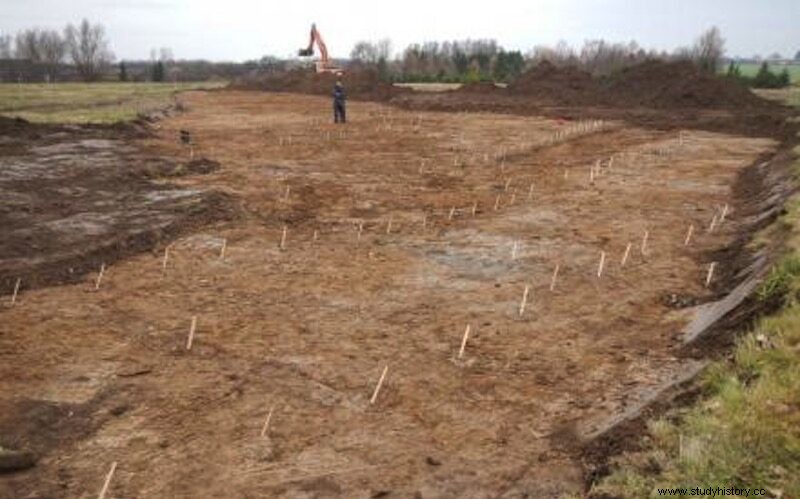The discovery adds to other Stone Age enclosures recently found in the country, whose function remains a mystery.
It is a huge structure originally made up of wooden poles, oval in shape and covering an area of almost 18,000 square meters, located in the town of Stevns, on the east coast of the island of Zealand.
According to the archaeologist leading the excavations, Pernille Rohde Sloth, the experience of revealing the traces of such a large Neolithic construction has been overwhelming. We have many suggestions of what it could have been used for, but we just have no idea of its original function .
The structure was made up of five concentric rows of palisades, but with the peculiarity that its entrances were not aligned with each other, which leads the researchers to think that it could have been a kind of labyrinth.

Furthermore, it is possible that the labyrinth was deliberately built to protect something hidden in the enclosure. However, nothing has yet been found inside, except for some pits of different sizes that contain flint tools, residues and ceramic fragments.
It is estimated that the posts that formed the circles of the supposed labyrinth were about two meters high and were not placed too close together, allowing the intermediate spaces to be crossed. This could be an indication that the structure was some kind of enclosure, once again, with no clues as to what it might have surrounded.
The area has not been completely excavated by archaeologists, since a sports pavilion is being built right next to it, under which more remains may have been buried.
However, it is not the only structure of this type that has appeared in Denmark. In recent years, several more have been found on the island of Zealand, Bornholm and Falster, and even some in Sweden.

Precisely on the island of Bornholm, also the site of the discovery of the first dinosaur found in Denmark, another palisade was discovered in 1988 in whose center there was a piece of wall decorated with solar symbols, the first time in history that something similar to the Stone age. For this reason, it is not ruled out that similar remains may appear in Stevns, which would allow the hypothesis that it is a solar temple to be stated.
The ceramic fragments found suggest that the construction could date from 2900-2800 BC, the time of the Bell Beaker Culture, thus being later than the Bornholm discovery.
